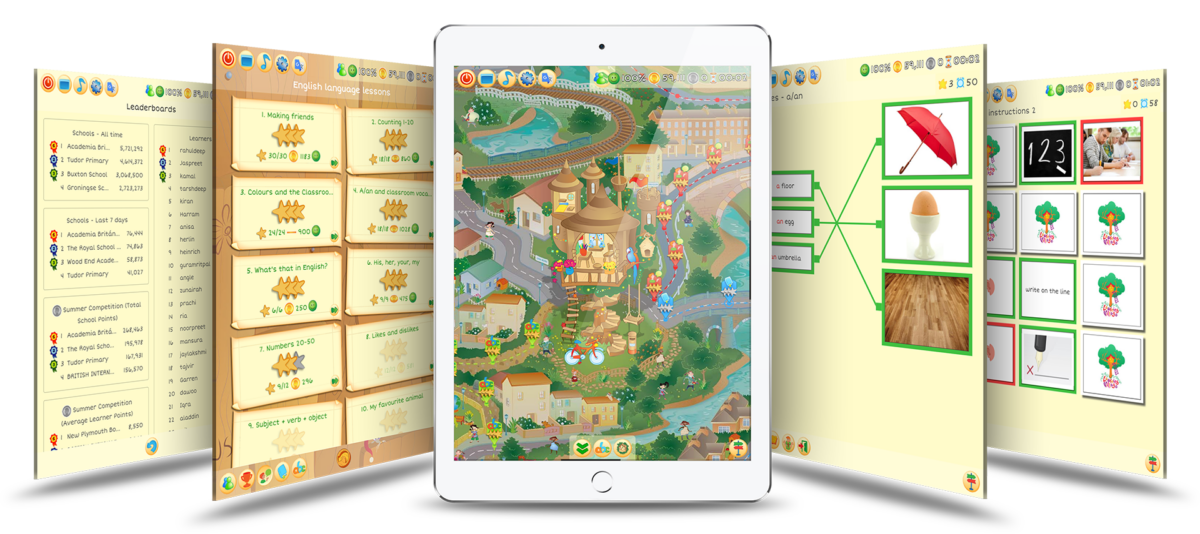Learning Village will join the #naldic31 conference as one of our Gold Sponsors. This guest post is an advertisement.
Effectively planning for larger numbers of EAL learners with limited time.
Time is becoming a precious commodity! Searching for resources, planning lessons and finding time to teach small groups is becoming increasingly challenging. But time is what multilingual learners need most to learn a new language, make friends and feel comfortable in their new environment. How can you teach them with the time and resources available to you?
Learning Village is an online interactive vocabulary, language structure and reading programme teaching the components of the English language to EAL, SEND and low-level learners, making the EAL learning journey enjoyable for learners, time-efficient for teachers and ultimately driving effective results.
Using image as the language of instruction, it is designed for learners to succeed regardless of their mother tongue or language background. Set in a huge interactive world, learners sit reading fluency and comprehension exercises whilst making a community of virtual friends. Based on sound research and EAL practice, it provides carefully designed curriculum, induction-to-English, phonics, spelling/reading resources and assessment tools.
However, different schools require different levels of support (dictated by teacher availability and EAL experience). So how can you make teaching English Literacy through Learning Village work for you whilst getting the best out of your multilingual learners?
Independent Learning
Routines help learners establish a pattern of learning and developing good habits. Nominating an EAL representative (Head of Village) who oversees the learners on the platform, can timetable independent learning time to ensure consistent learning. The programme will assess your learner and create an appropriate learning journey based on their proficiency to study independently.
Language-learning tasks are broken down into small, manageable elements, and new language is introduced gradually so a learner has a clear strategy to develop. It is a powerful tool to help them gain confidence using the language in more unknown situations, built on the idea that every learner can be successful due to the image-based approach.
Independent learning with small group support
For teachers with more capacity to support small-group teaching, it can be used for a combination of independent learning and small-group teaching out of class (focussed on pre teaching, induction to English or gap-filling challenging language). Small group teaching can have multiple benefits for the learner including building confidence and facilitating motivation.
Printable resources can be downloaded to support differentiation and pre-teaching of curriculum content. Assessment tools will monitor your learners’ progress, work is automatically marked and learning journeys are adjusted according to progress.

Independent learning, small group/1:1 support and classroom differentiation
To enhance independent learning and group teaching, curriculum content and resources can be created/customised to suit teaching requirements. Create bespoke online content using relevant tools for teachers to pre-teach curriculum and support learners.
Final Thought
Quality EAL provision doesn’t have to be compromised because of time constraints. The EAL scaffolded lesson plans, resources and motivational platform are available to increase your capacity to support learners to take more ownership of their learning journeys and benefit from autonomous learning or springboard from small-group teaching into productive self-study using the Learning Village.
Author: Katharine North
Learning Village (www.learningvillage.net) and Across Cultures
Learning Village will join the #naldic31 conference as one of our Gold Sponsors. This guest post is an advertisement.



